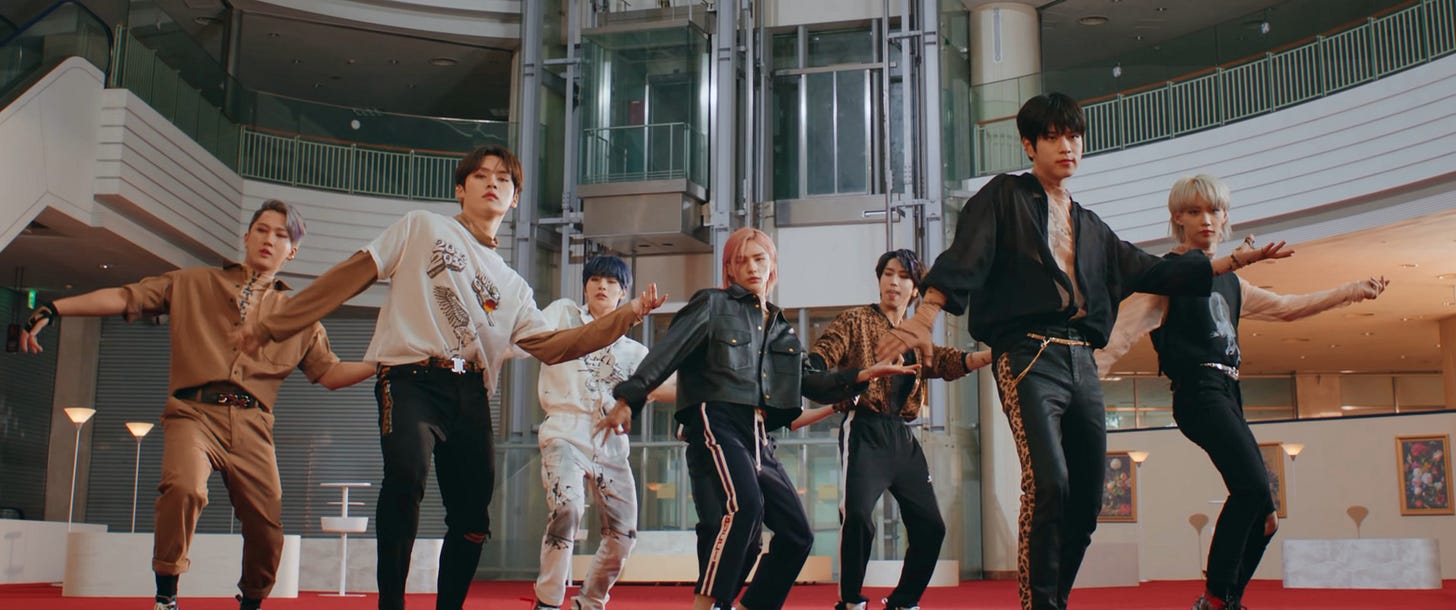
The other day I watched every Stray Kids title track MV in order. The boys dance in warehouses and garages, on rooftops overlooking a maze-like city run by corrupt oligarchs. There’s a plot if you care to follow it—something about keys and doors, moons and Robert Frost—which seems to culminate with the video for “Levanter.” It’s all very The Matrix meets The Hunger Games. Under Bang Jaeyeop’s direction, their new 2020 MVs have felt less YA dystopia and more Battle Royale. Stray Kids left behind the fantastic realm introduced way back in “Hellevator,” but they’ve retained some of the imagery and themes established in their earlier MVs. A fur-clad politician from “Miroh” appears in the background of “Back Door,” barely noticeable in a crowd of uniformed chefs and schoolgirls. The racing track and garages in “God’s Menu” recall sets in earlier MVs, especially “My Pace.”
And yet, “Back Door” and “God’s Menu” are stylistically very different than the previous MVs. In one scene in “Back Door,” four of the members dance in dim light in what appears to be an abandoned art museum. Behind them, Bang Chan flips an oversized switch and the members are suddenly bathed in white light. They’re on red carpet, one of the few colorful features in an otherwise neutral set. Red has been a motif in Stray Kids videos since Bang Chan found the poinsettia in “District 9,” a single flower among the vines symbolizing liberation and individuality. In “God’s Menu,” red is everywhere—the props, the set, the lighting, the costumes—while the members liken their creativity as musicians to the artistry of a gourmet chef. Now, in “Back Door,” they’re doing choreo that looks like a boxing match on the red carpet and inviting us to join them. The camera rarely settles for more than a few seconds, moving with the boys as they dance, and whipping around to transition between shots. It’s more stylized than the typical kpop box video, darker and more visceral. Green screen dystopias have been exchanged for red spotlights and cracked concrete. It’s both hellish and banal, not unlike the world we live in. And despite it all, Stray Kids are still existing, creating, fighting, and dancing.
You wanna come in?


